From crisis to flourishing company thanks to QRM
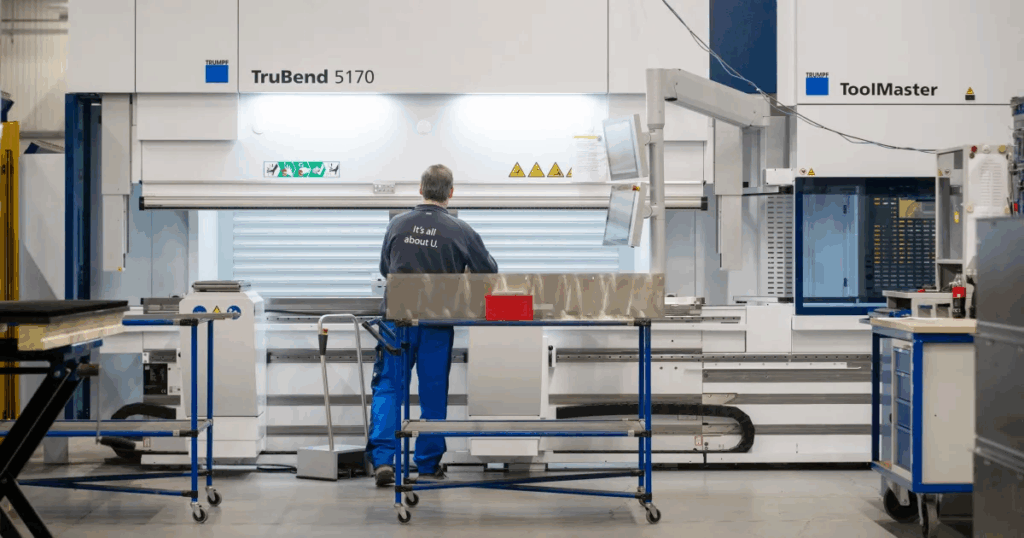
By Pascal Pollet – Sirris, Belgium
In a fast-changing world where customers expect shorter and shorter delivery times and competition is fierce, manufacturing companies are constantly searching for ways to improve their efficiency. Quick Response Manufacturing (QRM), a company-wide strategy focused on reducing lead times in both production and administrative procedures, offers a strong response to this.
What is QRM?
The concept of Quick Response Manufacturing (QRM) was first developed at the end of the 1980s by Professor Rajan Suri. The method was specifically developed for companies with a high product mix and low volumes. It enables businesses to bring products to market faster, reduce costs, improve delivery reliability and increase quality. Every year Sirris organises various QRM training courses, ranging from Bronze to Gold. During the announcement of the latest Silver edition we were guests at Pattyn Metal Construction in Bruges, where managing director Jan Pauwels shared his experiences with the method.
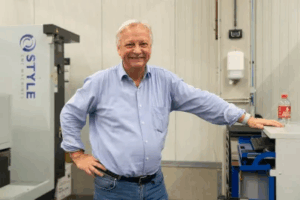 Nearly bankrupt
Nearly bankrupt
PMC, previously Pauwels Metal Construction, was for years an established name in the metal industry in West Flanders. Their business model was based on large production volumes for machine manufacturers. Jan Pauwels: “We had always supplied large production volumes … until we were faced with the economic crisis of 2007. We had just made a heavy investment, and then the work disappeared – and not from one customer, but from all the customers. They did still want to order, but instead of 100 pieces, it was only 5. What do you do then?” The customer demands also became greater: “The customers were satisfied, but they thought that it all took too long. Previously parts were ordered 3 to 4 months in advance; now companies wanted a delivery period of 3 weeks. Or a machine needed emergency maintenance: ‘Can you deliver tomorrow?’ We weren’t prepared for that. I had to go looking for solutions”.
“We had just made a heavy investment.
And then the work disappeared. Not from one customer, but from all the customers.”
Implementation – from theory to practice
Jan discovered QRM via an article, after which he delved into the method and contacted Pascal Pollet from Sirris, the authority in this field in Belgium. This ultimately led to an intensive QRM masterclass with Professor Rajan Suri, the founder of QRM, in 2015. Under the guidance of Sirris, PMC then started a QRM programme. The first item for action was the centralisation of work preparation: “Then we decided to have one big office together to keep the lines short. That took some getting used to in the beginning, but instead of e-mailing, we could now just ask each other ‘Has that material already come in?’. That naturally caused some resentment, because you saw exactly what everyone was doing, but it also went much faster.”
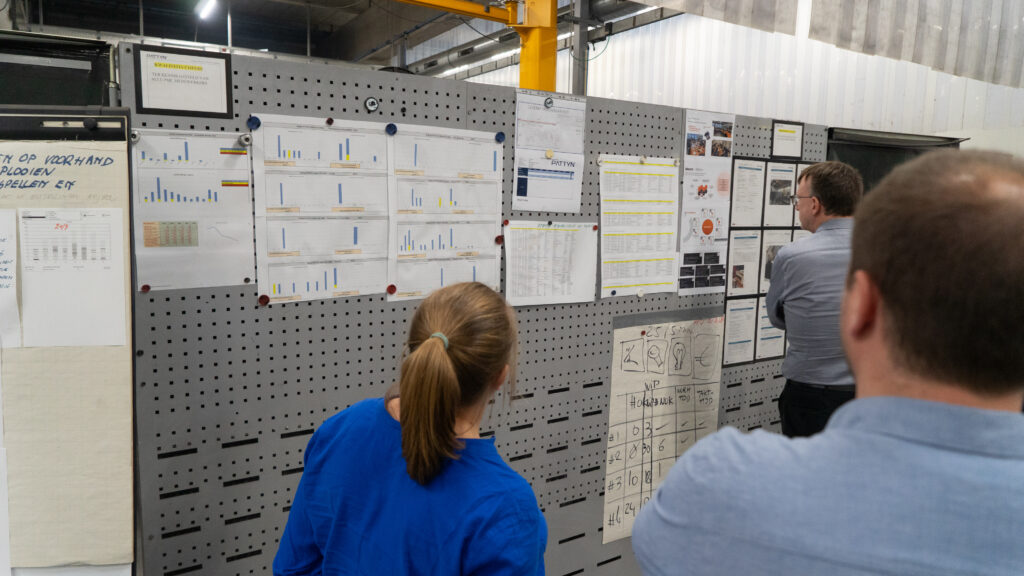
Picture: The statistics and planning are put up in the middle of the production floor and are used for team consultation.
Then we introduced cross-training and started to work in QRM units. This required a cultural shift, but yielded significant improvements: “Instead of an order having to go through 3 to 4 people, one person can handle an order from A to Z. That was great progress and it meant that we could deliver on very short notice. It does make it harder to find new personnel, because not everyone wants to learn so many different skills.”
Measurable results – a quantum leap in performance
The impact of QRM on the operating results of PMC was downright spectacular. A few months after QRM began, Jan installed PROPOS production planning software. It looks somewhat like an information board at the airport; it shows the company backlog, the prioritisation of tasks and the workload. “We lose much less time searching for information and have a better overview of what needs to be done.” The implementation of Azumuta, for digital work instructions, was a great advance too: “It shows employees step by step, with photos and explanation, how they should make a certain item. This ensured that our quality went up visibly.”
“You have to let go of the standard thinking in terms of cost and look at the end result after three years. That helped us to persevere and keep investing in digitalisation.”
The first results were in quickly: “I drew up the balance sheet; we had gone from 80% delivery reliability to 99.5%. In 2 months’ time! The “Work in Progress” was cut in half too. That was fantastic, of course.”
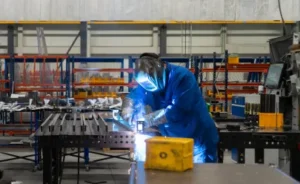
Each QRM unit has all the necessary work materials around the operator. To the right you see the unit where the digital work instructions and planning tool can be consulted.
The results turned out to be even more impressive in the long term. The results speak for themselves: a drastic reduction in lead time (about 69%), a higher output per employee, improved product quality and less human error. After five years of QRM, the turnover had risen by 95%, and after seven years the EBITDA, with the same number of employees, was 25% of the turnover. These are exceptional results for this sector. The company is so successful that in the meantime it has Pattyn, its biggest customer, as majority shareholder, and since last year is 100% under Pattyn, which in turn was recently acquired by the American Duravant. This opens up more new opportunities for supply from PMC to the other European companies in the group.
Not without challenges
What are the keys to success? Jan Pauwels: “Time reduction leads to lower costs and faster delivery. Success also depends on a professional team, a structured shopfloor (supported by the 5S method) and continuing employee training via cross-training.”
But a QRM transition is not without challenges; internal knowledge sharing, a long implementation time (3-5 years), and initial cost increases demand patience and perseverance. Benchmarking with other companies such as Interfocus in the Netherlands, helped PMC avoid pitfalls and adopt best practices. Pauwels also emphasizes that accurate data are essential — bad input leads to bad results: “Ultimately QRM isn’t a finite project, but an ongoing process of improvement that requires a profound change in mindset and working method. Our vision for the future is already clear: PMC 4.0 is being built on further automation, digitalisation and the use of AI to raise efficiency to an even higher level.”
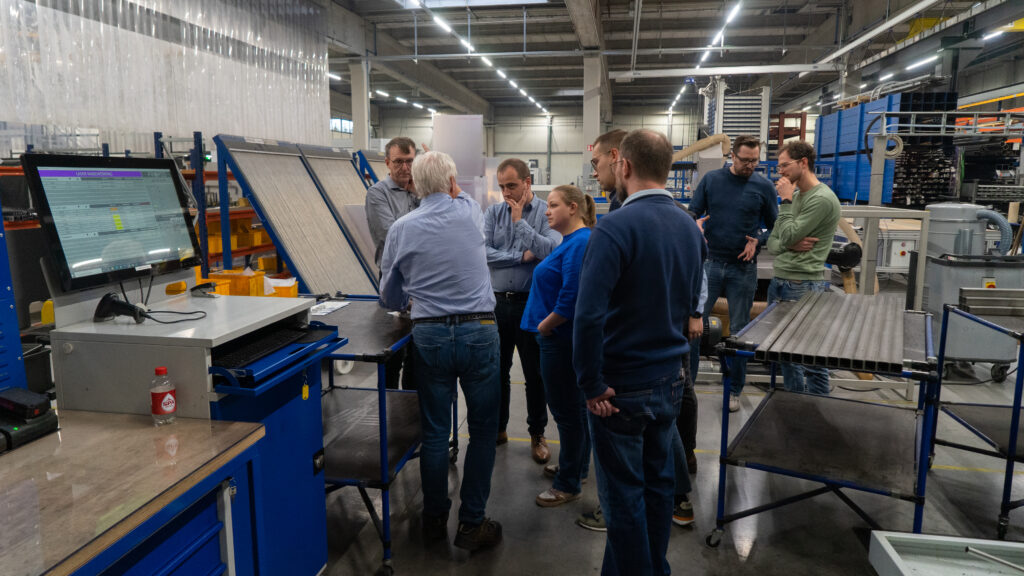
Just before publication of this article we learned that PMC is also the 2025 LEAN LEAD WINNER OF BEST QRM PRACTICE, and this is motivating Jan Pauwels and his team to continue down this path, because it doesn’t stop here. 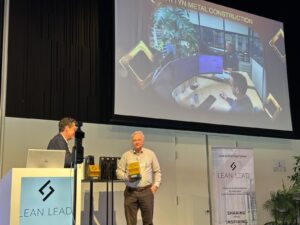
QRM Silver – get started yourself!
The case of PMC demonstrates how powerful QRM can be for companies struggling with lead times, delivery reliability and flexibility. On the 4th of November a new series begins. For companies that, just like PMC, are faced with challenges, QRM Silver training from Sirris can make the difference between stagnation and exponential growth. In 9 modules, you’ll learn how you too can achieve impressive results.
Do you too want to shorten your lead times and boost your competitiveness?
